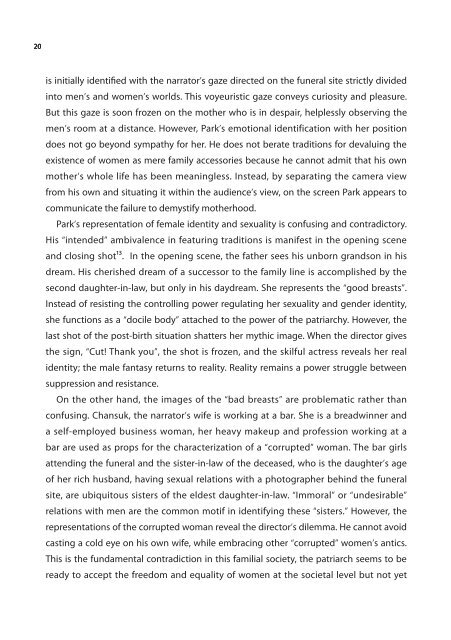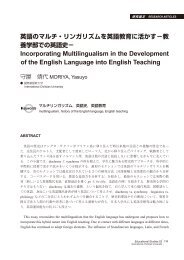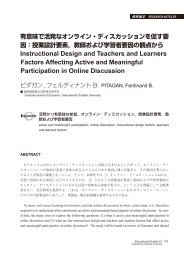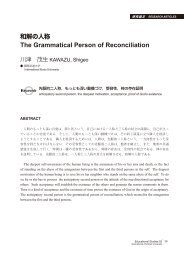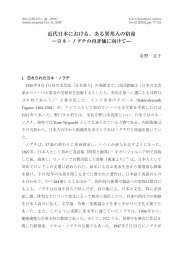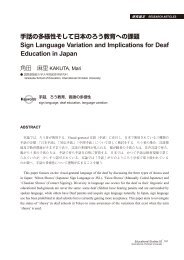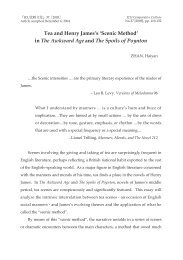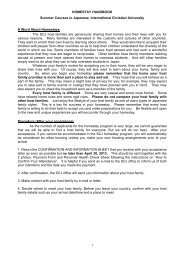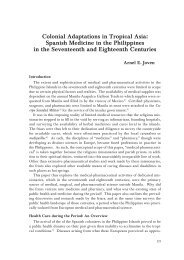Untitled - subsite - å½éåºç£æ大å¦
Untitled - subsite - å½éåºç£æ大å¦
Untitled - subsite - å½éåºç£æ大å¦
Create successful ePaper yourself
Turn your PDF publications into a flip-book with our unique Google optimized e-Paper software.
20<br />
is initially identified with the narrators gaze directed on the funeral site strictly divided<br />
into mens and womens worlds. This voyeuristic gaze conveys curiosity and pleasure.<br />
But this gaze is soon frozen on the mother who is in despair, helplessly observing the<br />
mens room at a distance. However, Parks emotional identification with her position<br />
does not go beyond sympathy for her. He does not berate traditions for devaluing the<br />
existence of women as mere family accessories because he cannot admit that his own<br />
mothers whole life has been meaningless. Instead, by separating the camera view<br />
from his own and situating it within the audiences view, on the screen Park appears to<br />
communicate the failure to demystify motherhood.<br />
Parks representation of female identity and sexuality is confusing and contradictory.<br />
His intended ambivalence in featuring traditions is manifest in the opening scene<br />
and closing shot¹³. In the opening scene, the father sees his unborn grandson in his<br />
dream. His cherished dream of a successor to the family line is accomplished by the<br />
second daughter-in-law, but only in his daydream. She represents the good breasts.<br />
Instead of resisting the controlling power regulating her sexuality and gender identity,<br />
she functions as a docile body attached to the power of the patriarchy. However, the<br />
last shot of the post-birth situation shatters her mythic image. When the director gives<br />
the sign, Cut! Thank you, the shot is frozen, and the skilful actress reveals her real<br />
identity; the male fantasy returns to reality. Reality remains a power struggle between<br />
suppression and resistance.<br />
On the other hand, the images of the bad breasts are problematic rather than<br />
confusing. Chansuk, the narrators wife is working at a bar. She is a breadwinner and<br />
a self-employed business woman, her heavy makeup and profession working at a<br />
bar are used as props for the characterization of a corrupted woman. The bar girls<br />
attending the funeral and the sister-in-law of the deceased, who is the daughters age<br />
of her rich husband, having sexual relations with a photographer behind the funeral<br />
site, are ubiquitous sisters of the eldest daughter-in-law. Immoral or undesirable<br />
relations with men are the common motif in identifying these sisters. However, the<br />
representations of the corrupted woman reveal the directors dilemma. He cannot avoid<br />
casting a cold eye on his own wife, while embracing other corrupted womens antics.<br />
This is the fundamental contradiction in this familial society, the patriarch seems to be<br />
ready to accept the freedom and equality of women at the societal level but not yet


